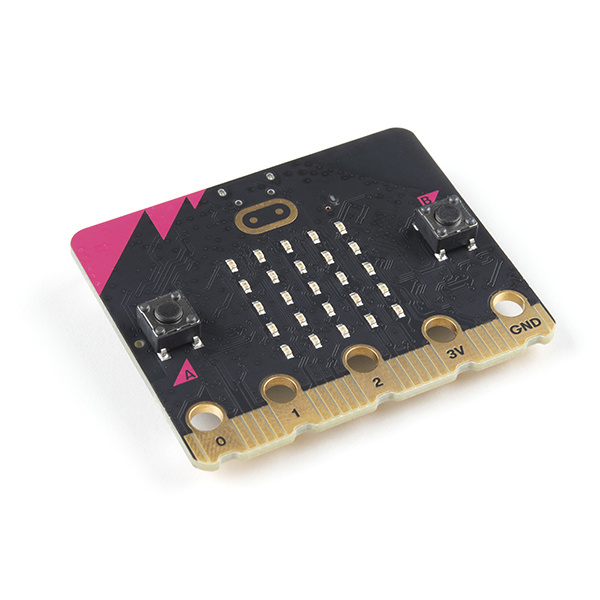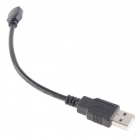Getting Started with the micro:bit
Introduction
So you bought this thing called a micro:bit...or even better, you've purchased the updated version, the micro:bit v2. But what is it?
micro:bit Board
DEV-14208The BBC micro:bit is a pocket-sized computer that lets you get creative with digital technology. You can code, customize, and control your micro:bit from anywhere! You can use your micro:bit for all sorts of unique creations, from robots to musical instruments and more.
The micro:bit is a project by the BBC in an effort to bring computer science education and STEM topics to every student in the United Kingdom. It is an open development board that works in sync with other onboard hardware components to get you started down the path of programming hardware.
At half the size of a credit card, you will be surprised at the amount of hardware each board is equipped with, including 25 red LED lights that can flash messages. There are two programmable buttons that can be used to control games or pause and skip songs on a playlist. The micro:bit can even detect motion and tell you which direction you’re heading. It can also use Bluetooth Low Energy (BLE) to interact with other devices and the Internet.
The micro:bit features an embedded compass, accelerometer, mobile, and web-based programming capabilities. The micro:bit v2 adds an onboard speaker and MEMS microphone, as well as a touch-sensitive logo. Both boards are compatible with a number of online code editors across a number of different languages. This guide will focus on MakeCode, a block or JavaScript-based environment that was developed by Microsoft.
Required Materials
To follow along with this tutorial, you will only need a micro:bit, and a micro USB cable. Pretty simple!
Suggested Reading
We recommend checking out the tutorials below as well.



